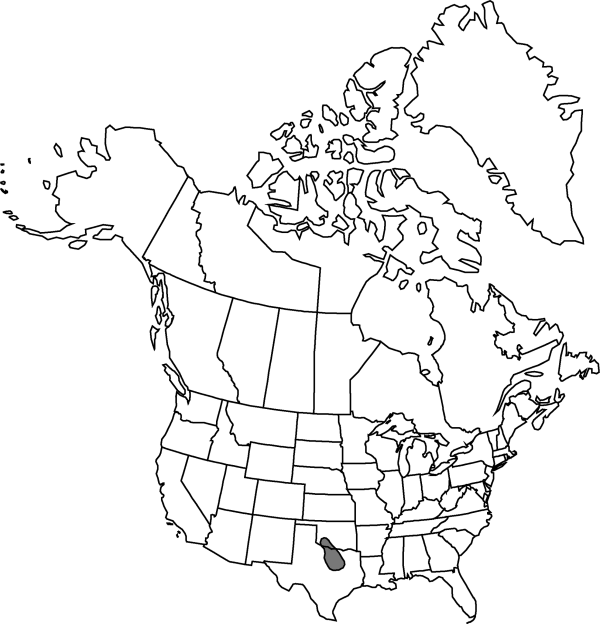Mirabilis gigantea
Field & Lab. 19: 177. 1951.
Stems erect, moderately leafy in proximal 2/3 of plant, few branched distally, 5–20 dm, basally finely pubescent with appressed, curled hairs often in 2 bands or rarely glabrate; distally densely puberulent with appressed, curled hairs. Leaves ascending at 30–45°, progressively reduced toward infloresence; petiole 0.2–1 cm; blade grayish green, ovate to broadly lanceolate or oblong, 5–10.5 × 1.8–8 cm, coriaceous, base cuneate to round, truncate, or cordate, apex usually acute to obtuse, occasionally round, surfaces usually glabrous, sometimes very sparsely puberulent with curved hairs. Inflorescences usually terminal, main axis with short side branches, sometimes short branches present in upper axils; peduncle 5–19 mm, usually densely puberulent with curled hairs, sometimes sparsely so, occasionally spreading-villous, crosswalls of hairs pale; involucres pale green, widely bell-shaped, 4–5 mm in flower, 7–9 mm in fruit, sparsely to densely puberulent with curved hairs, 50–70% connate, lobes ovate. Flowers 3 per involucre; perianth rose-pink to pale-pink, 1 cm. Fruits dark grayish brown, narrowly obovoid, 4–5.3 mm, shaggy-pubescent with spreading hairs often tufted on tubercles, hairs 0.3–0.5 mm, also with layer of minute hairs; ribs usually paler, round-angular, 0.5–1 times width of sulci, as wide as high, irregularly notched or tuberculate, often most deeply so near apex; sulci usually with small dark tubercules or raised, horizontal, riblike tubercles.
Habitat: Sandy, open fields or woods
Elevation: 200-300 m
Discussion
In the northern portion of the range, Mirabilis gigantea appears to intergrade with M. albida.
Selected References
None.
